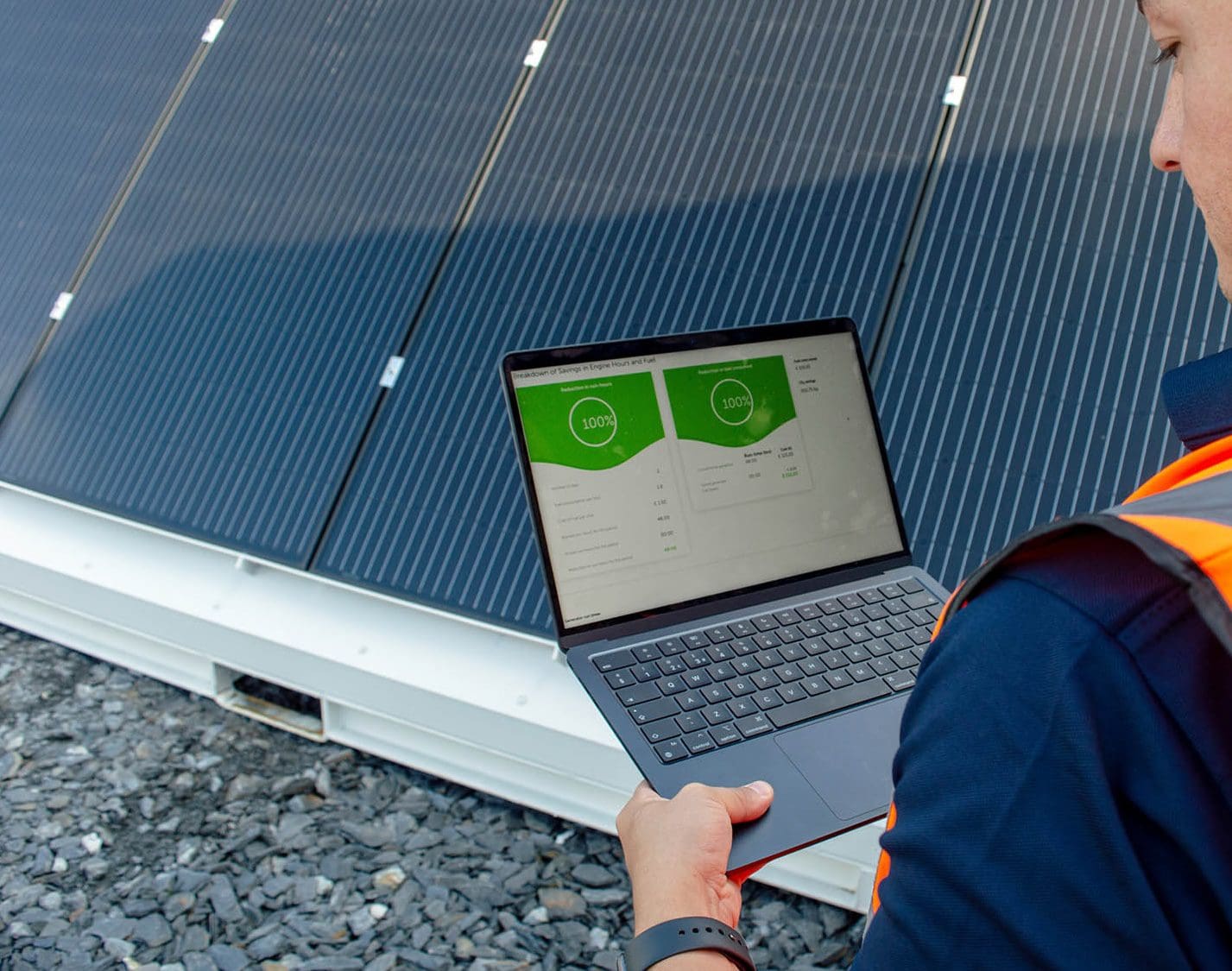Vehicle telematics are now fairly common, just ask any young driver who opts for a ‘black box’ insurance policy in order to keep costs down. The idea is to track a driver’s actions, allowing insurance companies to determine whether or not a person is a risky driver.

But, the initial goal of telematics was to improve road safety and also mitigate environmental impact, and what started as an idea in the 1970s, came to full fruition once GPS technology was available to the masses.
In the early 2000s, many fleet management companies relied on vehicle telematics, which allowed them to receive real-time updates, in order to track vehicles and gain insights into driver behaviour.
Take the latest innovation from us here at Garic, we’ve recently introduced our Welfare Van Eco+ as a product for hire. Premium vehicle telematics comes as standard with this model, which allows a company to gain insights into a driver’s behaviour, and monitor fuel efficiency, all while providing real-time location information and event tracking.
The meaning of Telematics
So, just what does vehicle telematics mean? Essentially, telematics refers to the transferring of information, or data, over telecommunication, which is collected and processed by a device that records information about how the vehicle is used.
The predominant type of information collected comes from GPS tracking, which allows the device to capture information on the vehicle’s speed, real-time location, as well as driving behaviour. Once collected, this data is then sent to a portal in the cloud, typically either via a 3G or 4G network.
The main benefit of cloud-based hosting is that the collected data can be accessed anywhere, anytime, from any supported device with the login information. The fact that the data is hosted in the cloud ensures your existing systems are not burdened with all the incoming information.
You will generally find that all collected data is readily available through a comprehensive reporting suite, while you will also be able to receive instant alerts and notifications.
How can Vehicle Telematics benefit your business?
The beauty of vehicle telematics systems is that you are able to configure them to report only on data that is relevant to your requirements. Customising the data collected allows you to gain valuable insights, which otherwise may go unnoticed. The data can even be broken down by department or by branch depending on the size and scale of the business.
Customised vehicle telematics are beneficial for a number of reasons:
- Greater customer service
- Compliance and safety
- Optimise operations
- Reduce costs
Greater customer service
The ability to track a vehicle’s real-time location allows customers to see exactly where a driver is at any given point. If you ever use a food delivery application, you have probably used vehicle telematic tracking yourself, as the app tells you exactly where the driver is and estimates how long it will take for them to arrive at your location.
Compliance and safety
By enabling you to track driver behaviour, any unsafe or dangerous driving habits can be easily identified and stopped before a serious accident occurs. This also helps to prevent accidents and damage to a vehicle, which in turn decreases the amount of vehicle downtime, reduces insurance claims/costs and improves safety for drivers.
Optimise operations
By using telematics you are able to set up zones, geo-fences and gain the ability to be notified if a vehicle is being used outside of these zones, or at a time when it should not be in use, which enables you to detect any unauthorised use.
Reduce costs
Telematics are also a great way to reduce costs in a business, we have already touched on a couple of points, but let’s examine some in a little more detail.
- Fuel Consumption. If used correctly, telematics can dramatically improve fuel efficiency. By optimising routes, tracking speed and excessive idling, fuel consumption can be reduced.
- Labour. Vehicle telematics allows a company to validate all overtime claims as you can see the times that a vehicle is being used.
- Optimised operations. By always knowing when and where a vehicle is being used, you are able to constantly monitor your fleet to check for any unauthorised use.
Construction Site Telematics
So can construction equipment telematics benefit businesses in the construction sector? By making use of construction equipment telematics, businesses in the construction sector can save on costs and streamline day to day operations in the same way that businesses in the automotive industry are able to. And while the exact data collected and used may be slightly different, the end results are very much the same.
If anything, the real-time information and insights are more beneficial when applied to the construction sector, as companies are able to:
- Identify where all assets are at all times
- Manage assets across multiple projects and job sites
- Monitor how assets are being used to ensure that maximum output is achieved
- Monitor duration usage to determine when an asset needs to be serviced
We are also in the process of developing a groundbreaking telematics system for construction sites. This site monitoring system allows for smart servicing for all your waste, water, power usage and fuel needs. This system is designed to take all the guesswork out of when servicing is required by monitoring fluid levels remotely and notifying the user when a service is required.
This will allow for earlier ordering, resulting in no delays and greater on-site productivity!
The Welfare Van Eco+
The Welfare Van Eco+ uses the latest manufacturing processes and technology to bring modern comfort to the ultimate mobile welfare vehicle. We have created a larger interior space, without compromising on facilities by combining the drying room and the onboard toilet.
Premium telematics comes as standard on this fleet, meaning you have access to crucial data such as real-time location and event tracking, fuel efficiency, driver behaviour insights, and much more. And with this welfare van being HVO compatible, you can reduce your scope 1 emissions.
Key features:
- Premium telematics come as standard
- Silent welfare mode
- Built-in solar panels
- Keyless running system
- Automatic backup power available
- Power distributed through 240V and 12V circuit
Find out more about the Welfare Van Eco+ here
The team here at Garic are ready and waiting to fulfil your site’s needs, we’re only ever a phone call or an email away, so get in touch with us today!
